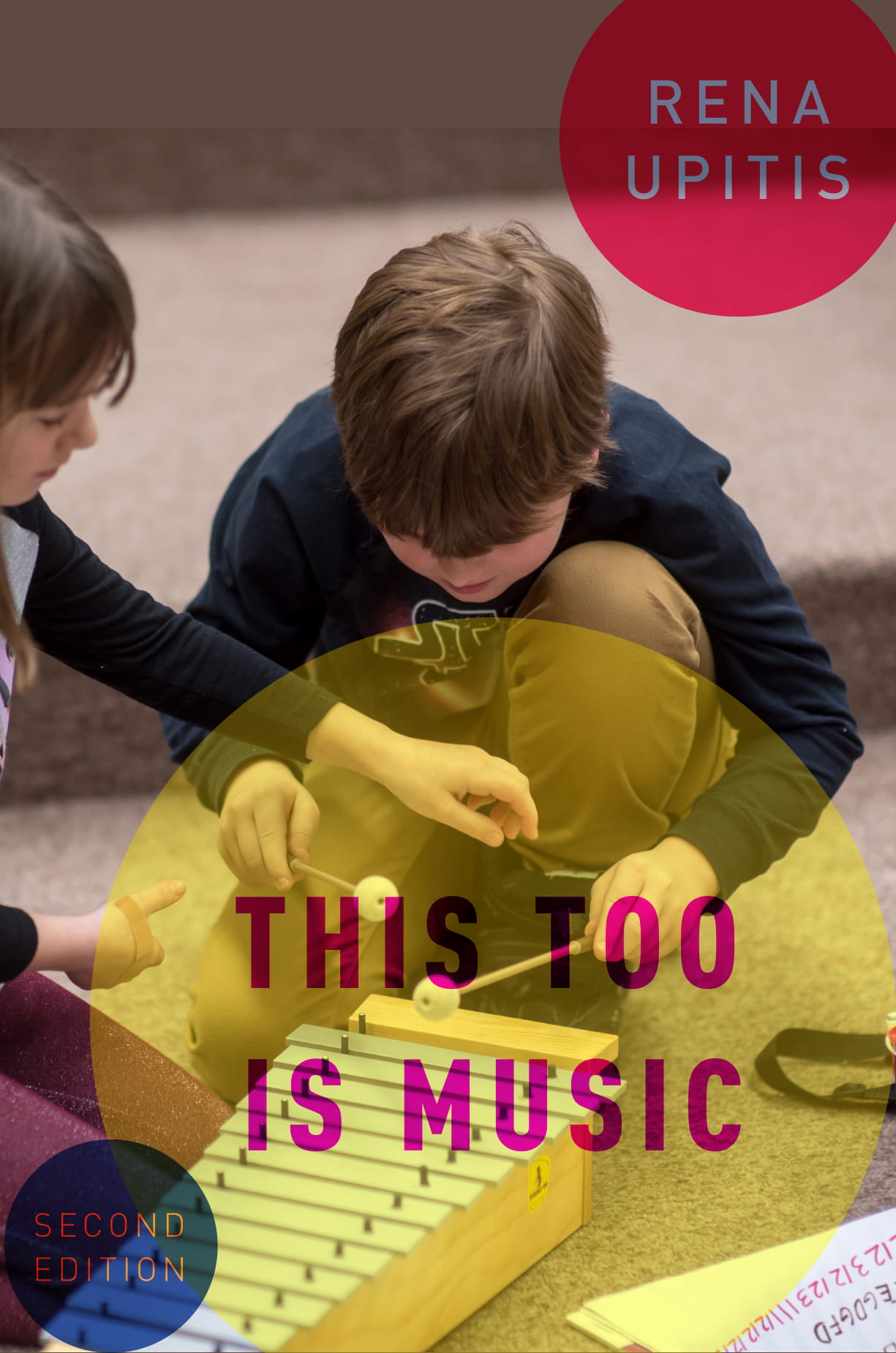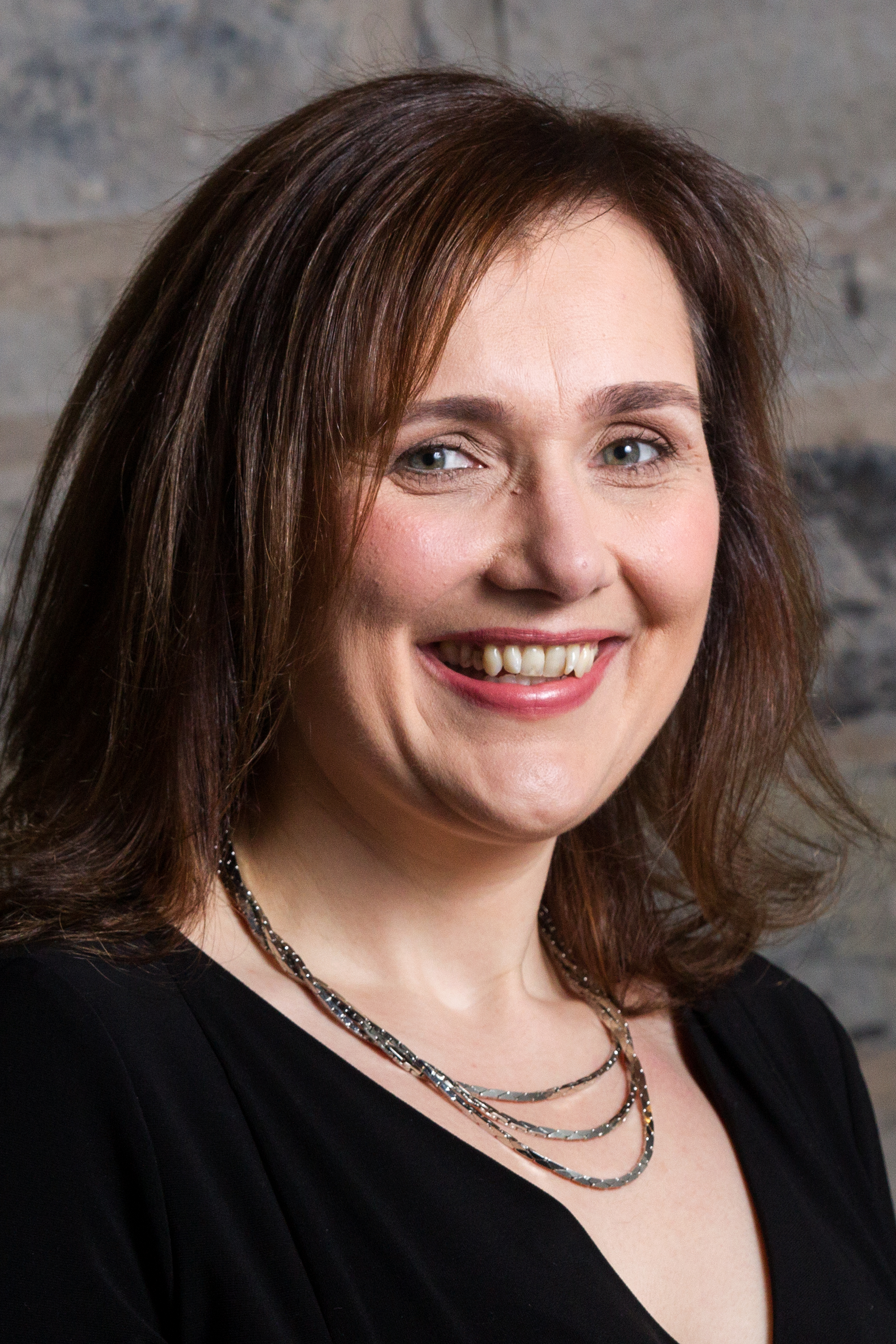Rena Upitis. This Too is Music. Oxford University Press. (2019)
Review by Julia Brook
Assistant Professor of Music Education at the Dan School of Drama and Music, Queen’s University, Canada
This Too is Music is 14 chapters, available in print or as an e-book along with a companion website of audio and video examples.
This Too is Music 2nd edition is an updated version of the music education approach described by Rena Upitis based on her experiences teaching music at the Hennigan school in Boston, Massachusetts. This book provides a vivid, multi-faceted description of one teacher’s praxis and in this second edition Upitis expands this description by infusing more examples of her approach based on her decades of experience teaching pre-service teachers and ground these experiences in salient research including her own research in rhythmic perception and use of technology in music classrooms.
Like the original, This Too is Music 2nd edition describes an organic approach to music education that capitalises on students’ creativity and curiosity. While the bulk of these fourteen chapters explore a variety of music-making activities, consideration is also paid to the physical space, culture(s) of the students and the teacher. The personal accounts of the experiences illuminate the line of thinking that consider the complexity of thinking that teachers undergo as they strive to find and develop learning experience for their pupils.
The opening chapters situate the reader to a neighbourhood with more than its fair share of challenges but we also learn about the riches of experience and integrity that these children exude which are not always immediately apparent to visitors to the school as they pass police officers and signs about firearms. At the heart of this first chapter Upitis explores the ideas of how to meet our expectations and challenges herself (and us) to have the highest expectations for all of our students. Along with this she introduces questions about how we go about supporting positive and productive behavior of our students and indeed shape our learning experiences. Here we come to understand Upitis’ philosophy and pedagogical goals of findings ways to help students amplify their “feelings and thoughts through musical expression” (p. 16). Upitis argues for the need to harness the musical abilities and sensibilities that children have upon entering our classrooms. In Chapter Two she describes musical play as a means to enact her philosophy. She argues that through play-based learning, children can explore their own ideas and customise the ways that they create and organise sound and that this type of learning provides a student-centred way of learning.
Upitis begins her description of this student-centred play-based approach by introducing to us movement-based activities in chapter three where children are asked to create movements to accompany their names, combine movement and sounds to create an orchestra as well as ways to respond to sound through movement. All of these activities begin with students’ inspirations and the chapter culminates with ways to use these spontaneous creations to create formal choreographies that can be performed.
Before proceeding to describe other play-based and student centred approaches such as performing (chapter five), improvising (chapter six) or composing (chapters seven to nine), Upitis pauses to discuss ways to build trust with students and support their risk-taking (chapter four). “The [musical] experiences would not have been as rich had we not together cultivated an atmosphere where it was safe to risk, safe to explore, safe to make mistakes, and safe to grow” (p. 49). Along with the safe and caring environment, teachers can also reveal themselves as learners to their students and model the vulnerability that occurs when we acknowledge that there is more to know and to do and that the learning process is messy. Upitis further discusses how children need to know that they have the time to explore and contemplate new ideas and develop new skills and use new tools, and she argues that establishing this type of rapport is essential in supporting student growth.
Chapters seven, eight and nine are devoted to this topic which begin with a discussion on improvisation and the importance of exploring sounds through chanting, singings and playing instruments that allow students ample time to explore sound before symbols for these signs are developed. Chapters eight and nine are devoted to describing and understanding the various ways that students notate their sounds and there is a wealth of figures that illustrate the creative ways that students represent their ideas. These descriptions of her teaching experiences are further enhanced through salient research that discusses rhythmic perception and symbol recognition. Parallels between reading and writing music as well as learning to read and write in English are also discussed.
The heart of This Too is Music is describing ways to provide a rich and multi-faceted approach to music education that incorporates movement, creation, singing, and playing. Performance, too, has a role to play in this approach and Upitis describes formal performance experiences like staged musicals (chapter 11), informal ways that music and story can be combined (chapter 11) as well as other informal performance opportunities such as recess concerts (chapter four). In addition, Upitis explores the variety of ways that students can infuse their ideas in the development of stories, characters or concerts. She also provides retrospective accounts from former students that attest to richness of these experiences. Upitis’ multi-faceted approach also considers ways to support the development of skills. Knowledge of vocal development, pitch-matching ability are discussed specifically in chapter twelve while the principles are evident throughout the book as ability-appropriate activities are described, underscoring how teacher knowledge is essential in establishing parameters in student-centred learning.
The original version from the 1980s features a lengthy chapter about music technology describing some groundbreaking applications such as Melody Manipulations and Musicland as well as Logo, the educational programming language of the 1980s. In this second edition, Upitis pays homage to these groundbreaking technologies and introduces us to new applications for composition and notation. While touting the many benefits of these tools and other digital applications, Upitis offers a balanced approach to digital adoption that also considers the rich learning that can occur with instruments, books and other materials. This discussion of technologies is complemented by a discussion of ways of students to construct instruments and create new compositions for their new music-makers (chapter 13). Together these two chapters illuminate how students can use new digital applications and upcycled resources to create music and explore sound through a variety of activities that are meant to embrace students’ ideas and interests.
In the final chapter Upitis pays homage to her mentors and describes the ways that her teachers have inspired her pedagogy. We teach the way that we were taught and, in this chapter, Upitis acknowledges the variety of ways teachers can inspire their pupils. These intergenerational insights are also peppered throughout the book as Upitis makes mention of correspondences that she has had with Hennigan pupils who inspired this first edition. The students whom she contacts, now teacher, lawyers and artists, can still recall these activities and these testimonies speak volumes about the enduring power of music and the success of this approach.
This Too is Music explains both the needs and skills of her students and how she incorporated a student-centred pedagogy that allowed for creation and curiosity to thrive through movement, singing, playing, composition and improvisation. While any of these activities themselves can easily be adopted in a variety of classrooms, Upitis’ narrative writing styles provides a model of a philosophy in action.
This book is ideally suited for teachers and pre-service teachers who want examples of how to create a student-centred, well-rounded music education approach. Upitis does not intend her account to be a method or recipe for music education, but rather a description of an approach along with a narrative account that provides a rationale for her decisions and insights into the student learning. The clear and personal narrative in this book beautifully captures the many considerations of a teacher and how one integrates students, context, salient research and physical space to create meaningful and rich music education. This model of consideration can serve a framework for developing ways for teachers to realise their praxis.
About the reviewer
Julia Brook is an Assistant Professor of Music Education at the Dan School of Drama and Music, Queen’s University in Canada. Her research examines ways to ensure accessible and appropriate music education programs in a variety of settings. Julia’s research has been published in international journals including the IJME and her research has been supported by the Social Sciences and Humanities Research Council.Available to buy
Physical book: available from all good book retailers including Book Depository - paper book, freight free
Ebook: go to Books2Read which will provide you with a range of suitable links for an e-version of this book













